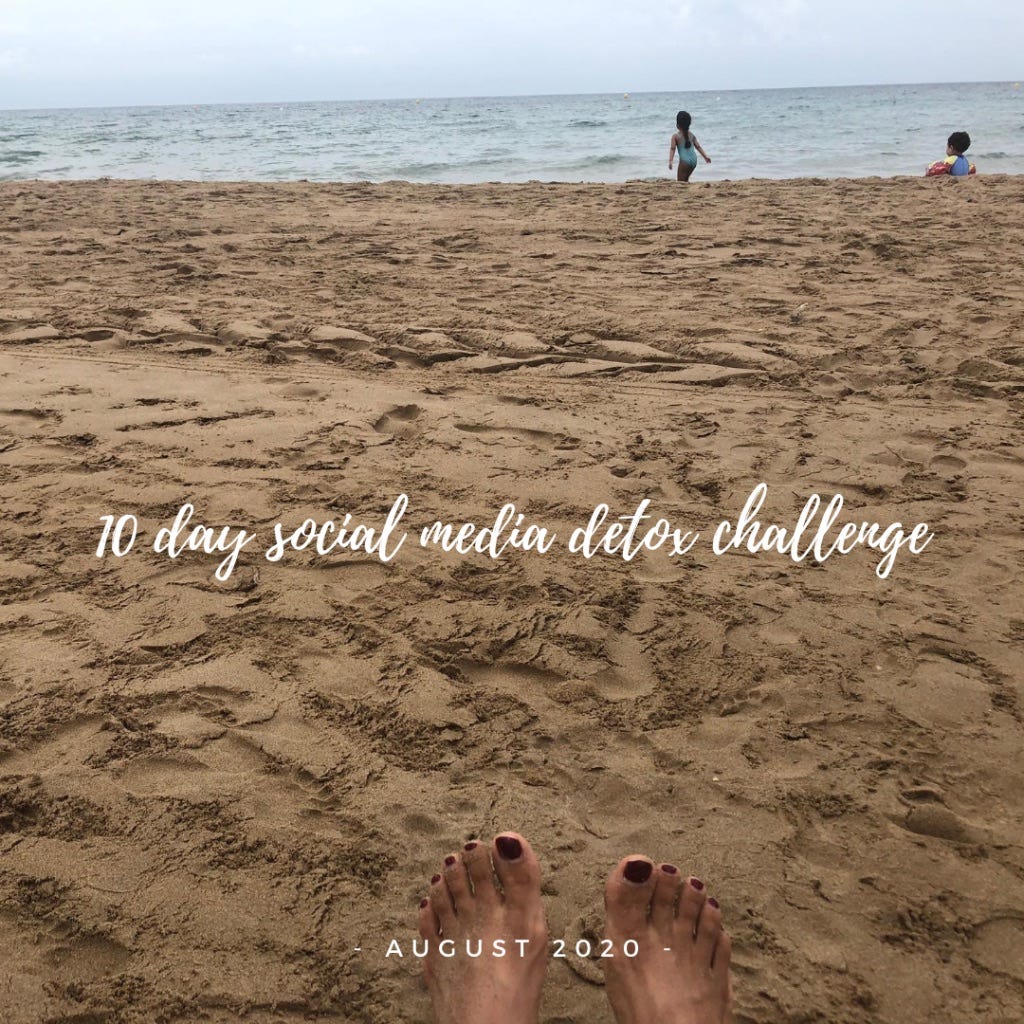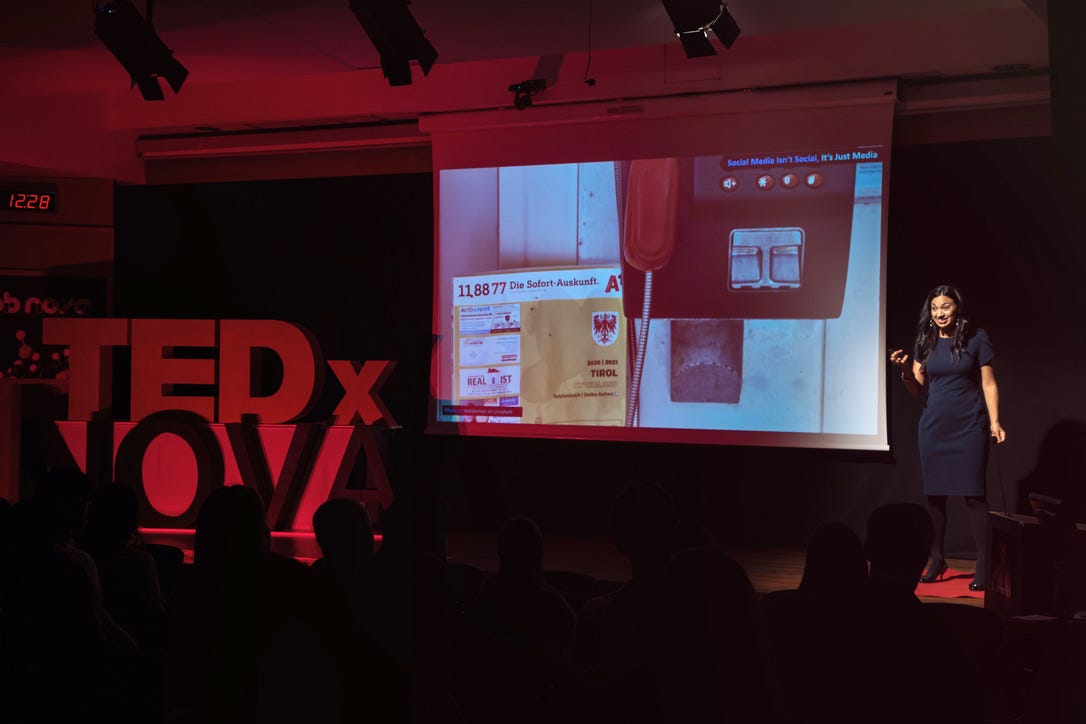If you had told me four years ago that I would end up deleting social media from my phone, I wouldn’t have believed it. I used to think that social media was my window to the world, and to be honest, I was hooked, or perhaps… addicted?
My digital well-being journey started three years ago with a 10-day digital detox. Little by little, I turned off notifications, experimented with apps and extensions that block distracting features, until I finally eliminated social media apps from my phone in January 2022.
Since then, I’ve reclaimed a lot of time, attention, and mental space. You, too, could. It’s a common outcome, as Cal Newport also states in his book Digital Minimalism. Many of the participants in his digital declutter experiment, who tried with different degrees of technology abstinence, reported similar positive results.
But, how is it possible to significantly reduce one’s social media usage when it’s undeniable that there are benefits to it?
For me, the process started with two key realizations:
I was trying to cure my stress with the dopamine that social media provided.
I thought I was maintaining some friendships through social media, but it turns out those relationships were not very deep or real anymore.
I am a well-being professor, so I practice self-awareness and I am knowledgeable about emotions. However, I had to take one hard look at myself and realize that many of the times I picked up my phone, I was just doing it because I was trying to appease an underlying negative emotion (usually stress) with a hit of dopamine from my phone. I was using my phone as a “digital pacifier.”
My second realization was two-fold. On one hand, I concluded that I don’t need to keep up with baby pictures of 1000 people I went to elementary school with in Mexico. I live thousands of miles away and have hardly ever talked to or seen any of my old classmates in decades. On the other hand, while talking to one of my friends whom I don’t follow on social media, I realized that keeping up with my close friends happens in real life through conversation. I will always know what’s going on in their lives because they’ll tell me when we get together, even if I miss their social media posts and stories.
And that’s how the main argument for my TEDx talk, “Social Media Isn’t Social, It’s Just Media,” was born.
I truly believe that the premise that “Social Media Isn’t Social” is an idea worth spreading, especially among my Gen Z students.
I teach undergraduate classes on attention, digital well-being, and time management. Young adults eagerly sign up searching for solutions to their distraction, FOMO, and procrastination.
One of my objectives is to invite them to reflect on the main underlying reasons we use social media:
Are we really using them to connect with our friends, or do we use it instead to numb ourselves and escape unpleasant emotions in the real world such as boredom, awkwardness, and anxiety?
We think the main reason is the first, but is that really the case?
When I ask my Gen Z students why they joined social media in the first place when they were younger, they mention:
Staying in touch with their older friends and family members who were already on social media
Games and entertainment
Members of older generations too, joined initially to meet new people or rekindle old connections. That’s what social media was at the beginning, when it hadn’t been monetized: just a collection of static profiles that helped people connect. No feed, no algorithm, no ads, no infinite scroll.
But social media doesn’t keep us connected. Okay, it does, but not as much as we think, and that small fragment of superficial connection makes it very difficult to let go of the idea that the main reason we use social media is to keep up with friends.
Social media allows us to be “connected” to a lot more people than we would without it, but we are losing depth in our connections as Jonathan Haidt and other experts suggest. The U.S. surgeon general alerts of a loneliness epidemic. The World Happiness Report 2024 indicates that in North America, Australia, and New Zealand, loneliness among Millennials is double that of Boomers. One reason for this, as I suggest in my TEDx talk, is because the connection that social media provides is an illusion.
And, most of the time, we’re not even socializing on social media, we’re just consuming content as we would from any other media.
The following are some of the questions I have my students discuss and share in small groups. I propose you pause and think about your own answers:
What proportion of your screen time is spent passively consuming content served to you by the algorithm vs. actively seeking information (restaurant recommendations or tutorials, for example) or actively communicating with your friends and family through DMs?
Of the passive consumption time, what proportion of the time are you consuming content from people you don’t know in real life vs. content from people you do know in real life?
What proportion of your contacts/followers do you talk to or DM to on a regular basis? Likes and Snapchat streaks do not count.
Would there be any important consequence if you stopped watching (or reacting to) the updates of people you don’t really meet or talk to regularly?
Upon reflection, it’s common to realize that most of the time, we’re wasting a lot of time using the media aspect of social media instead of the social aspect.
But even if we realize social media makes us spend more time than intended on the platform, renouncing social media is hard. It feels more difficult than giving up Netflix because, on social media, the marginal social part it provides is bundled with the main entertainment aspect.
If you are not ready to leave social media completely but you’d like to gradually reduce the time you spend passively scrolling, here are a few suggestions to experiment with:
Limit notifications to DMs only. Suppress notifications for likes or comments and allow notifications for DMs only. That way, content notifications don’t lure you to the bottomless feed. You only get notified when someone is actively trying to contact you.
Use apps and extensions that will hide your feed. There are digital solutions that will prevent you from passively scrolling and allow you to only actively and intentionally engage with the platform. The time-sucking functionalities such as the feed disappear (you can decide when and for how long), but you can still look for restaurant reviews, communicate with your friends, and even document your life.I personally use and recommend NewsFeedErradicator and Unhook. Other solutions I have heard of, but haven’t tried include BeTimeful, Hidefeed, Undistracted, and Beeper.
Decentralize the functionalities of your social media to avoid getting trapped into the feed. For example, don’t use social media as your news source; go to the media outlets’ apps instead. Try using alternative options to obtain product or service reviews. Use a different messaging platform (see my next point).
Move as many online conversations as possible to messaging apps that don’t have a feed. Not every online communication has to happen on Snapchat groups or Instagram DMs, especially with friends that you are more familiar with, other alternatives may be feasible.
Consider uninstalling social media from your phone. You can still maintain connections via the browser, but this way, you stay in control and intentional about your usage.
Nurture your friendships. Organize get-togethers with your friends in real life or, if they live far away, call them regularly (once every three weeks works fine).
Social media offers minimal and superficial connections, but keeps us passively consuming content and ads for far longer than we intend. Awareness is key. Reflect on your usage, align it with your values, and take steps to reduce it. Use apps, tricks, and hacks to find what works for you. Be intentional and connect meaningfully with loved ones. You won’t regret it!
Stephanie Reina is a positive psychology speaker and educator specialized in digital well-being. Through her classes and TEDx talk she aspires to encourage people to reduce their unintended social media usage and connect with their loved ones in more meaningful ways.


